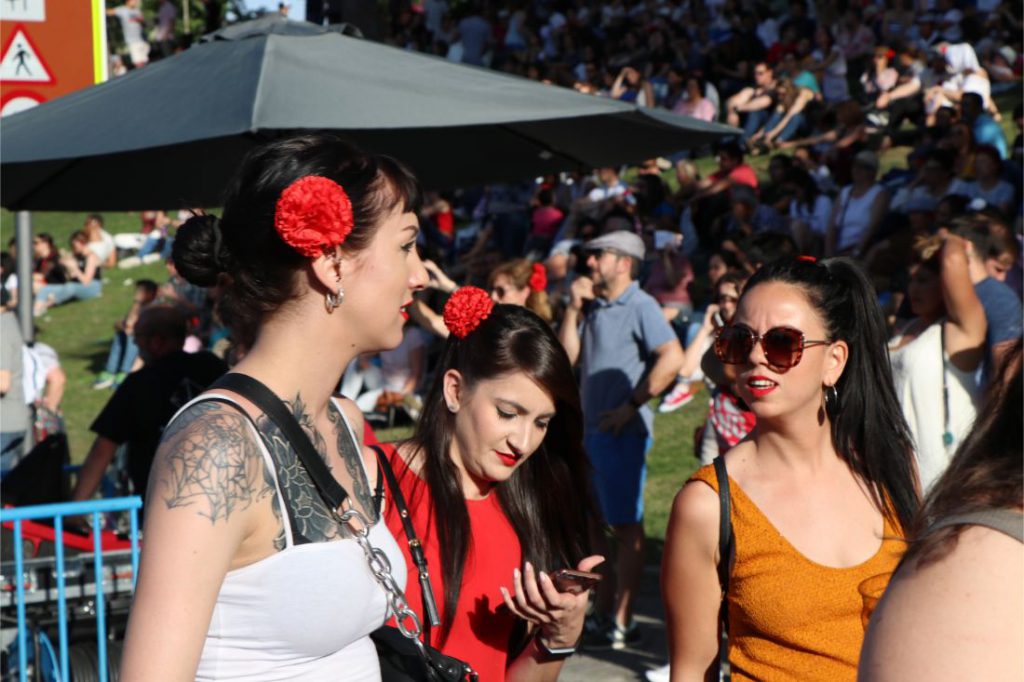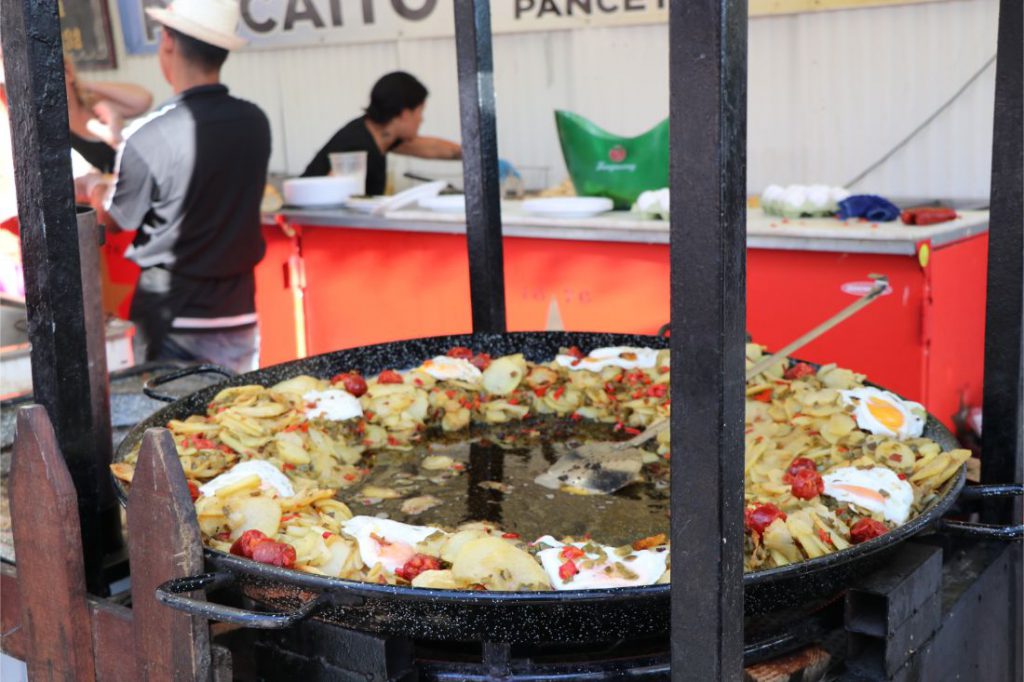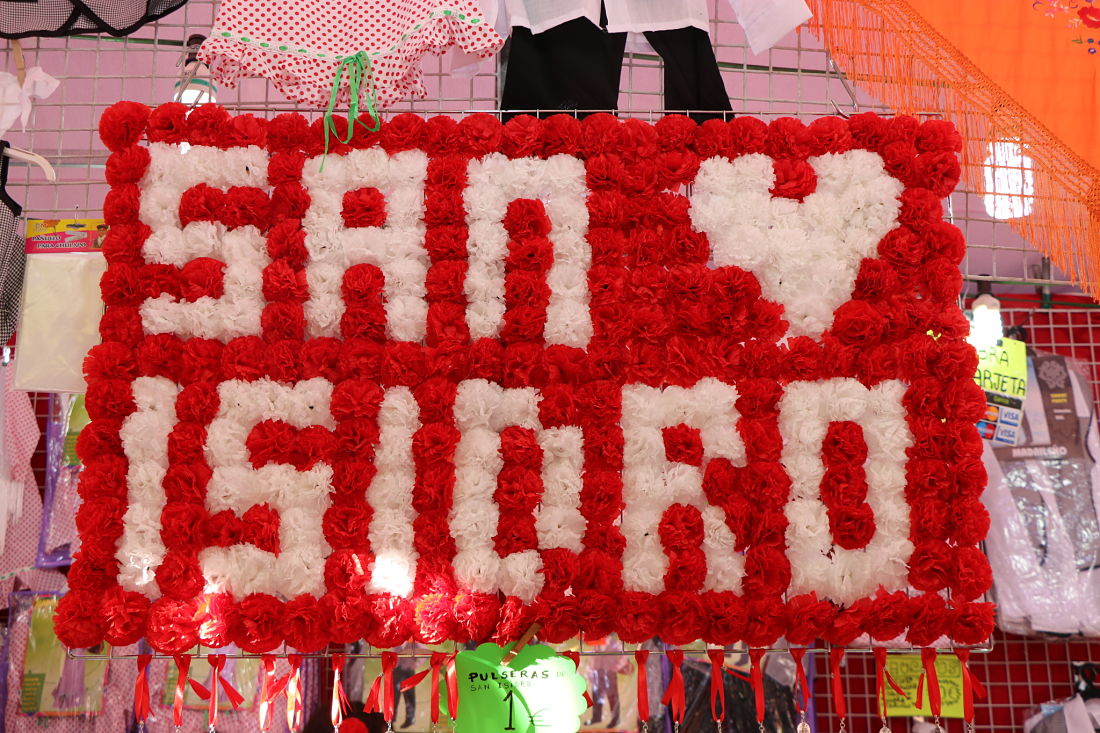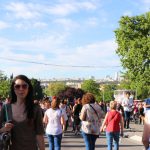Text and photos by Valerie Nikolas
Medill Reports
Madrid’s San Isidro Festival is a multisensory experience filled with music, dance, historical and religious folklore, poetry, food and drink. On May 15 and the days leading up to it, Madrileños (residents of Madrid) honor the patron saint of their city, San Isidro (Saint Isadore) with events that take place throughout the city. On the saint’s feast day, thousands gather in San Isidro Park, located in the Carabanchel district of Madrid, to celebrate a festival with origins that begin almost 1,000 years ago.
San Isidro was a peasant farmer who lived in Madrid from 1070 to 1130 A.D. Legend says that when his son fell into a well, San Isidro prayed to God that the well would fill with water. It did, and his son floated to safety. Since then, Madrileños have prayed to San Isidro to bring rain, especially during this springtime festival. The scorching 90-degree heat on the day of the fest emphasizes this point.
“According to tradition, San Isidro performed a lot of miracles, and many of the miracles were about the water,” said Margarita Gonzalez, who works at the San Isidro Museum in Madrid. “This is important because many people in Madrid believe in these types of miracles.”
Traditional garb for San Isidro includes chulapo and chulapa outfits. These outfits resemble the type of dress that members of the middle and working classes wore in the 1800s. For women, a chulapa outfit consists of a long dress or skirt, often red- or black-and-white polka dotted, with a wide flare and lantern sleeves. They often complete their look by wrapping an embroidered shawl around their shoulders or waist. For men, the chulapo outfit consists of a white button-up shirt worn beneath a checkered white-and-back vest worn with black slacks.



Although the people of Madrid have celebrated this fest for almost 1,000 years, it changes with time. Now it’s a blend of old traditions and modern life. Still, many women wear the traditional red carnations in their hair.

What to Do
The festival is rooted in religious tradition, although it has expanded to be much more. Still, the religious aspect remains at the core. The San Isidro church is located near San Isidro Park. At 1 p.m. on the day of the festival, the church celebrates a mass dedicated to the saint. Believers can drink water at this service and venerate the saint’s remains, which reside in the church.
Thousands make the pilgrimage to line up and drink or take home water that’s said to be blessed by San Isidro. Others go to the San Isidro Museum, which is built around the well his son is said to have fallen into. “Thousands of people come to this museum to drink the water here,” Gonzalez said. “Because people believe that on this day the water is magic.”

The traditional dance performed at San Isidro Festival is the chotis. Although this dance originated in Germany in the 1800s, it quickly became popular in Madrid and to this day it is still performed as a traditional dance. The chotis is a partnered dance, typically with a man and a woman. Dancers take steps and twirl, similar to a polka.
What to Eat
Countless vendors at the San Isidro Festival sell traditional Spanish favorites, including paella, Iberian ham and various types of other barbequed meat. Madrileños wash this down with a special lemonade topped with sugar, lemon and chopped fruit.

No San Isidro celebration is complete without rosquillas, small doughnuts made with olive oil and anise. Traditionally there are four types of rosquillas: Las Listas (“the smart”) are topped with powdered sugar, while Las Tontas (“the dumb”) are not. Rosquillas Las de Santa Clara are topped with glazed sugar, as are Las Francesas, but they also have almonds sprinkled on top.

The festival closes out with a dazzling fireworks display that begins around midnight. With something for everyone, the San Isidro Festival offers Madrileños a culture-rich way to relax and welcome the beginning of summer.





